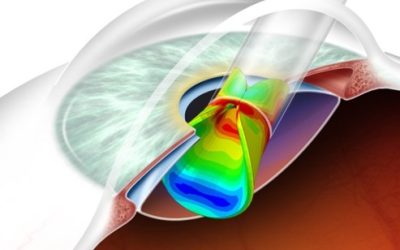In the realm of medicine, the understanding of how timing influences drug efficacy has given rise to the promising field of chronopharmacology. This discipline examines the intricate relationship between our biological clocks and the pharmacological action of medications. By tailoring drug administration to an individual’s natural circadian rhythms, chronopharmacology has the potential to significantly improve patient outcomes. This blog explores the concept of chronopharmacology, reviews the evidence supporting its positive impact on patient health, and discusses key themes and ideas for its implementation, particularly the role of digital technologies in making personalized chronopharmacology accessible to patients.

Figure 1
What is Chronopharmacology?
Chronopharmacology is the study of how the timing of drug administration influences drug efficacy and safety. It acknowledges that the body’s various physiological processes, including metabolism and cell replication, exhibit daily rhythms, often referred to as circadian rhythms. These internal clocks are synchronized to external cues, such as light and darkness, and they can affect the way drugs are metabolized and interact with the body. This synchronization is a result of the intricate interplay between the body’s master biological clock, located in the suprachiasmatic nucleus of the brain, and peripheral clocks distributed throughout various organs. The concept of chronopharmacology stems from the understanding that the timing of drug administration can have a profound impact on the drug’s effectiveness, side effects, tolerability, and overall safety. By aligning medication administration with an individual’s circadian rhythms, it is possible to optimize therapeutic outcomes while minimizing adverse effects.
Evidence of Positive Impact
Cancer Treatment: One of the most compelling applications of chronopharmacology is in the field of cancer treatment. Studies have shown that chemotherapy drugs administered at specific times of the day can enhance their effectiveness while reducing toxic side effects. For instance, the administration of certain chemotherapy agents, like irinotecan and oxaliplatin, at specific circadian times has been demonstrated to improve treatment outcomes in patients with colorectal cancer. Additionally, the timing of radiation therapy can impact the success of treatment, with evidence suggesting that delivering radiation during the afternoon rather than in the morning may result in improved tumor control. Cardiovascular Medications: Cardiovascular diseases are a leading cause of death worldwide, and medications that target these conditions also show promise in chronopharmacology. For instance, studies have shown that taking blood pressure medications, such as Angiotensin Converting Enzyme inhibitors and calcium channel blockers, at bedtime instead of in the morning can help reduce blood pressure more effectively, decrease the risk of cardiovascular events, and lower the incidence of adverse side effects. Immune System Enhancement: The immune system exhibits diurnal variations, with different components of the immune response being more active at various times of the day. Some research suggests that timing certain medications, such as vaccines and immunomodulators, to coincide with peak immune activity may enhance their effectiveness. Vaccines administered in the morning have been shown to induce stronger and more lasting immune responses, which is especially significant in the context of infectious disease prevention. Analgesics and Pain Management: Pain perception and response to analgesics are also influenced by circadian rhythms. Research indicates that the timing of analgesic administration can significantly affect pain relief. For instance, taking non-steroidal anti-inflammatory drugs (NSAIDs) at specific times of the day may provide more effective pain control with lower doses, reducing the risk of adverse effects.

Figure 2
Key Themes and Ideas
Personalized Medicine: One of the core principles of chronopharmacology is personalization. It acknowledges that circadian rhythms between two patients could be between 5-8 hours offset from each other, and a one-size-fits-all approach to the timing of medication delivery is sub-optimal. Tailoring drug administration to a patient’s specific circadian profile is crucial for maximizing each individual patient’s therapeutic outcomes. This necessitates the development of devices, tools, and methods for passively assessing a patient’s circadian rhythm, allowing healthcare providers to prescribe drugs at optimal times for each patient. Moreover, an individual’s circadian rhythm changes over time leading to the need to not just measure a patient’s circadian rhythm at one point in time but to monitor it, perhaps daily. Exploration of drug circadian effects: This could be an incredibly valuable exercise, understanding circadian effects during a drug’s development will allow clinical trials to be tailored to maximize the efficacy of a new drug, increasing its chance of success, reducing costs in clinical trials, and increasing speed to market. Moreover, evaluating circadian effects in existing drugs could open up avenues to extend patent life and the economic value of drugs. Adaptation of Clinical Trials: The accurate recording of time of administration of medications in clinical trials will enable important connections to be made between patient outcomes and circadian phasing. Technology will play a key role in capturing this valuable (and currently under-utilized) data. Drug delivery innovation: Controlling the delivery and release of drugs, either through specific timing strategies or by controlling the profile of their delivery over an extended time will create systems for optimizing the benefits of chronopharmacology. This will open opportunities for unique device development, smart body worn technologies or creative formulation strategies. Multidisciplinary Collaboration: The continued development of Chronopharmacology and measuring circadian rhythm in real-world settings is inherently multidisciplinary, involving fields such as medicine, biology, human centered design, and engineering. Collaborative efforts are essential to drive research and innovation in this area. By bringing together experts from various domains, we can uncover novel ways to deliver chronopharmacology and develop new treatment strategies. Awareness and Education: To realize the full potential of chronopharmacology, healthcare professionals need to be aware of its principles and benefits. Educational programs and awareness campaigns should be developed to train doctors, nurses, and pharmacists on the nuances of timing medications. Patients, too, should be educated about the importance of adherence to timing recommendations.

Figure 3
Digital Technologies and Chronopharmacology
Devices and digital technologies have a pivotal role to play in making chronopharmacology accessible to patients. Here are some ways in which technology can be leveraged: Circadian Rhythm Assessment Apps: Mobile applications that allow patients to track their circadian rhythms can provide valuable data for healthcare providers. These apps can use data from wearables like smartwatches to monitor sleep patterns, physical activity, and body temperature. By analyzing this information, healthcare providers can prescribe medications with greater precision. Medication Reminder and Synchronization Apps: Digital medication reminder apps can not only help patients adhere to their medication regimens but also provide guidance on optimal timing. Such apps can be programmed to send reminders when it is time to take a medication based on the patient’s circadian rhythm, ensuring that the medication is administered at the right moment for maximal effectiveness. Telemedicine: Telemedicine platforms can facilitate remote consultations between patients and healthcare providers. This is particularly valuable for patients who need chronopharmacological guidance but cannot easily visit a healthcare facility in person. Through video consultations, patients can discuss their treatment plans and timing recommendations with their healthcare providers. Wearable Devices: Wearable devices can play a crucial role in chronopharmacology. They can continuously monitor a patient’s physiological parameters, providing real-time data on their circadian rhythms. Healthcare providers can use this data to adjust medication timing in response to any changes in the patient’s circadian profile.
Conclusion
Chronopharmacology holds tremendous promise in improving patient outcomes by optimizing drug efficacy and safety through timing. Evidence from various fields, including cancer treatment, cardiovascular medications, immune system enhancement, and pain management, suggests that aligning medication administration with circadian rhythms can lead to better results with fewer side effects. Key themes such as personalized medicine, multidisciplinary collaboration, and education are essential for advancing this field. Digital technologies are pivotal in making chronopharmacology accessible to patients. As we continue to uncover the intricacies of our internal clocks, the potential for chronopharmacology to revolutionize patient outcomes is an exciting frontier in medicine, one that offers the possibility of more effective and individualized treatments for various health conditions.
AUTHOR
Graham Myatt, Business Development Lead in Pharma/Drug Delivery

Reference: The Potential for Chronopharmacology to Revolutionize Patient Outcomes – B011-PDD
Keep in touch with us. Sign up for our newsletter.



